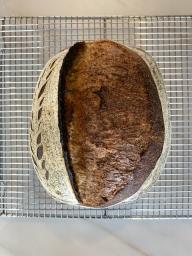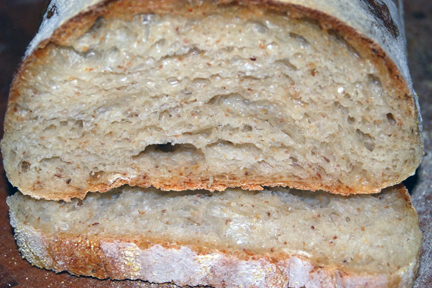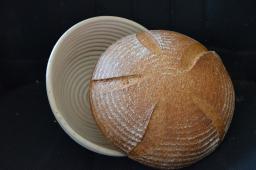So... time to try something new and the pictures of the pita breads on the right side of TFL has always appealed to me.

Being European, I had to use some other measurements and didn't bother getting the exactly like the recipe, so here's what I did, inspired by http://www.thefreshloaf.com/recipes/pitabread.
Ingredients: (Made 8 pita breads á 50g)
- 1 dl tepid water
- 15g fresh yeast
- ½ dl plain natural yogurt (I can't seem to stop using this in my creations)
- 5g sea salt
- 5g honey
- 10g olive oil
- 50g durum/semolina flour
- 150g regular wheat baking flour + some for dusting and adding as nessecary.
- Optional: Spices (I used a tiny bit of ground chilli, smoked paprika and ground cilantro)
Mix the yeast with the water, add the yogurt, oil, salt and honey, mix well with a fork, till it's a greyish, oilish mixture.
Add the flour, a little at a time (100g) and stir with the fork as long as it makes sense.
Knead for around 10 mins or so. Let it rise under a luke warm tea towel in a warm place for 30 mins.
Carefully fold and strech the dough, and make a sausage. Cut the dough-sausage into appropriate size lumps, I weighed them and made them 50g. Let the pieces rest and rise for 5 mins.
Use a rolling pin to flatten the dough and hopefully you'll succeed in making them circular as well. Just make it really thin, not paper thin, but 3-5mm thick.
By this time your oven should be really hot (max. heat) and if you have a baking stone (which helps), it should be hot as well. Place the pancake lookalike dough onto the stone and bake them for 3 mins in 200°C or to taste. The breads should blow up like balloons.

Cut them up sidewise and enjoy your pitas.
Filling suggestion:
Garlic and herb roasted shoulder of lamb, sweet corn, tomato, cucumber, salad leaves and hot salsa.
...I'm going to quit blogging now and eat some more...


















